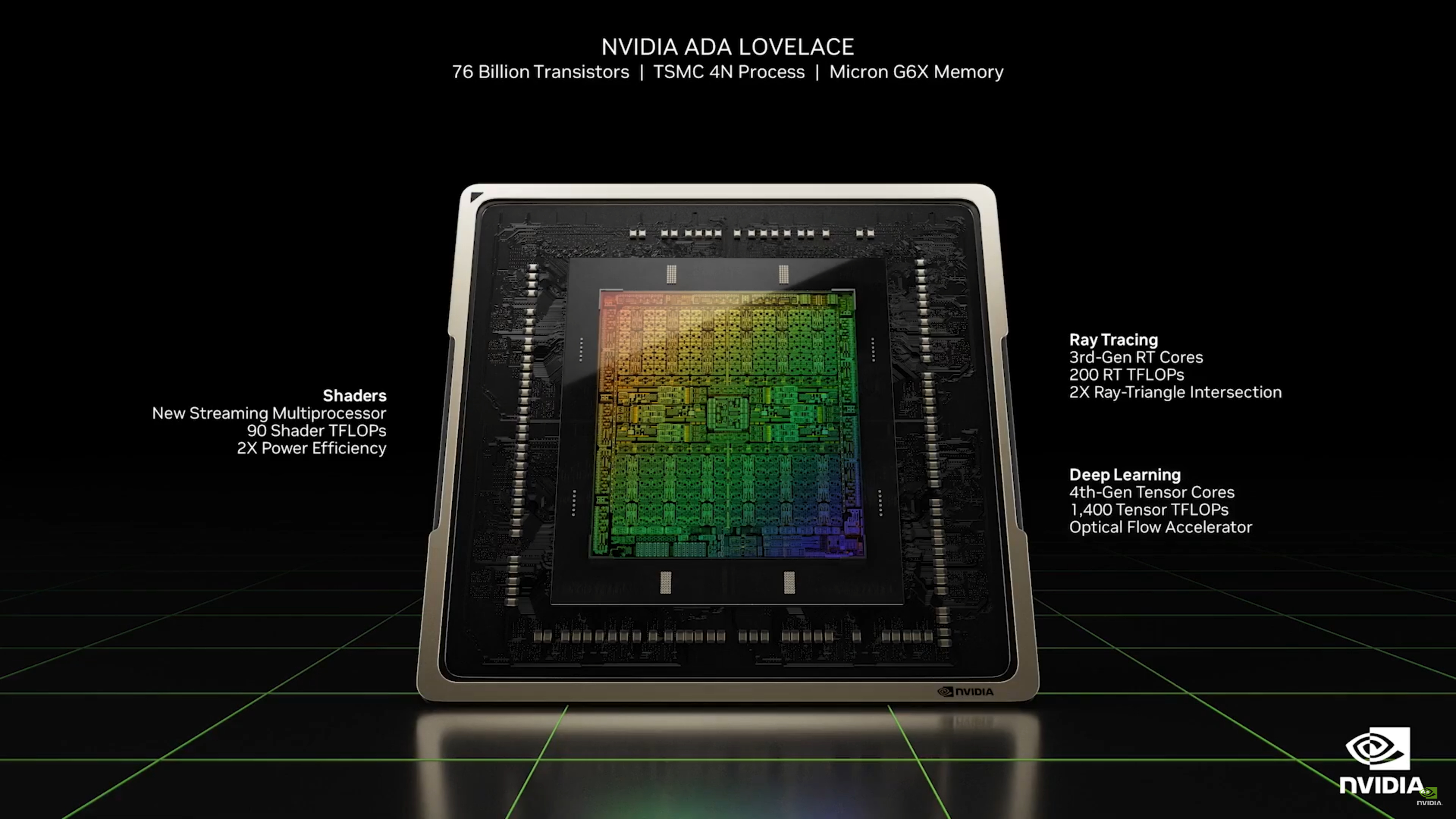Nvidia reportedly planning RTX 3050 A using Ada Lovelace AD106 silicon — it's unclear what features remain available or how it might perform
The RTX 3050 A will reportedly feature a next-generation die in the shape of the AD106 silicon.

Nvidia is rumored to be working on a new RTX 3050 A laptop GPU powered by an AD106 (Ada Lovelace) die. It departs from the usual Ampere chip used by all other GPUs in the RTX 30-series lineup. The RTX 3050 A doesn’t have an official release date, nor did Nvidia announce it. However, the GPU is already included in Nvidia’s latest driver release and appears as the “NVIDIA GeForce RTX 3050 A Laptop GPU” in the PCI ID database.
The use of the AD106 die for the RTX 3050 A is an intriguing choice, as it has more transistors and CUDA cores than the GA107 die it replaces in the current RTX 3050s and the AD107 used in the RTX 4050 laptop. The AD106, currently used in the RTX 4060 Ti desktop and RTX 4070 laptop GPUs, has 22.9 billion transistors and 4,608 CUDA cores. On the other hand, the Ampere GA107 die only has 8.7 billion transistors and 2,560 CUDA cores, while the Ada Lovelace AD107 die has 18.9 billion transistors and 3,072 CUDA cores.
While we won’t complain about an entry-level laptop GPU getting a potentially faster GPU with additional features, it's not exactly clear what aspects of the chip remain enabled and it lands in something of an awkward spot. The RTX 3050 A laptop GPU could potentially rival the RTX 4060 in both laptop and desktop versions, which use the less powerful AD107 die, but that seems unlikely. Aside from the AD106 die that Nvidia plans to put into the RTX 3050 A, we have no other information about its specifications.
Given past behavior, it's a safe bet that Nvidia isn't planning on using a fully enabled AD106 chip in the RTX 3050 A. In fact, it's probably a dramatically cut-down version of the chip that wasn't able to meet the requirements of higher tier parts. AD106 normally goes into the desktop RTX 4060 Ti as well as the mobile RTX 4070 Laptop GPU. It features up to 36 SMs (Streaming Multiprocessors) in its maximum configuration, but inevitably there will be chips that have multiple faulty SMs. These can be disabled to create a lower tier part, and that's likely happening here.
What's not clear is whether the RTX 3050 A would still have the higher performance OFA (Optical Flow Accelerator) that used for DLSS 3, and if it will support that. Probably not is our guess, but we'll have to wait and see how this plays out. Note that the standard RTX 3050 Laptop GPU also only comes with either 4GB of memory on a 128-bit interface, or 6GB on a 96-bit interface, so Nvidia could go either direction with the 3050 A.
We’re unsure whether Nvidia will even bring this GPU to market, but adding new SKUs this late in its lifespan isn’t unheard of. For example, we received the entry-level Nvidia GTX 1630 in late 2022 — two years after the RTX 30-series parts started shipping and over three years after the GTX 1650 using the same TU117 die launched. What we do know is that, in general, Nvidia tends to use similar names for similar levels of performance (within about 5%), so the RTX 3050 A Laptop GPU, if it does show up in systems at some point, likely won't be too much faster than the existing Ampere-based parts.
Whatever else might be disabled, AD106 uses TSMC's superior 4N node, rather than the Samsung 8N node used by Ampere, with nearly twice the power efficiency — meaning 3050 A could improve battery life if nothing else. It will be interesting to see how the RTX 3050 A performs compared to the existing RTX 3050 and RTX 4050 laptops, if or when it ships.
Get Tom's Hardware's best news and in-depth reviews, straight to your inbox.

Jowi Morales is a tech enthusiast with years of experience working in the industry. He’s been writing with several tech publications since 2021, where he’s been interested in tech hardware and consumer electronics.
-
Eximo Confusing, but as long as it hits the rough performance of a 3050 or exceeds it, not much reason to make note of it.Reply
4050 desktop variant? -
usertests You know, it's less confusing than usual because they bothered to put something in the name to distinguish it.Reply -
watzupken The naming convention makes no sense. If it is an Ada chip underneath, I don't see any reason why they can't call it a RTX 4050 or 4050 LE for all that matters. It is going to be super confusing as to what consumers are going to get when buying a RTX 3050. I reckon most people buying a RTX 3050 will likely want to get a Ada based one instead of the Ampere based chip.Reply -
WhyCry Why is Jawi Morales not giving credit to VideoCardz? There's ZERO chance he found this news by himself. This isn't even the first time.Reply
https://videocardz.com/newz/nvidia-preparing-geforce-rtx-3050-a-laptop-gpu-with-ada-ad106-gpu -
KyaraM I guess this way round is better than the utter mess AMD is making with their CPUs (mostly laptop, but not only) lately where chips with the same naming scheme (scheme, not name, before anyone accuses me of falsehood. I know there aren't 5 variants on an 7640HS, for example, but there being a 7640 and 7630 with different architecture is, frankly, bad enough already...) be anything between actually Zen 4 and as old as Zen 2, or some Intel SKUs using either the new or previous architecture like the 13400. At least this card isn't suggesting that something old is actually brand new. That should be banned, frankly. Why they don't just call it a 4050 is still beyond me, though. Not as if these vendors really care if a card is actually better than its predecessor (looking at you, desktop 4060 and 7800XT...). But at least you can kinda see it's an Ada card since they at least gave an indicator, though I guess the same can be said of "RTX 3050 6GB", which... is still confusing. *sighs*Reply